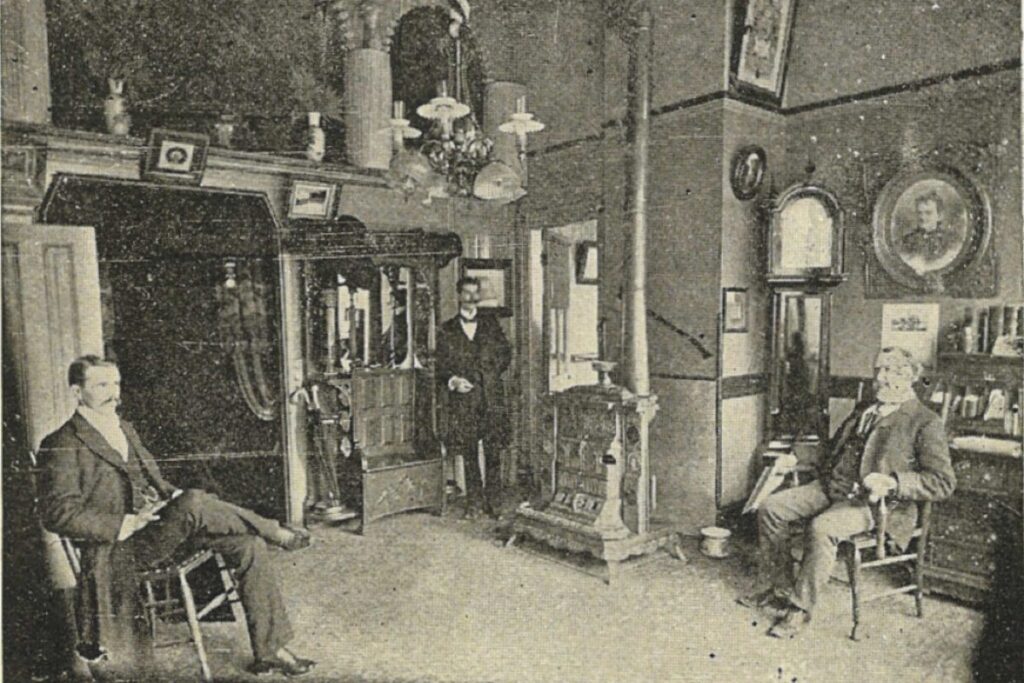Funerals have been around for thousands of years. However, it wasn’t until fairly recently that funeral homes became more established and prominent. It took several years for funerals to shift from small, family-oriented events to an almost entirely industrialized process. Learn more about this shift and the history of funeral homes below.
What is a funeral home?
A funeral home is an establishment that offers services for those who have died and their family and friends. The services offered vary depending on the funeral home, but the most basic service provided is the preparation of a body for burial or cremation. Other services commonly offered by funeral homes include assistance with death-related paperwork, funeral planning, embalming, sheltering, viewing, visitation, etc.
Early funerals
Funerals have been dated back several thousands of years ago, with early examples of gifts and grave markers found alongside corpses. However, funerals in Western societies are rooted back to the 18th and 19th centuries, with much of the practices adopted from other countries and civilizations.
For example, mummification and embalming practices began around 4,000 BC in Egypt. During that same period, people in Europe stored their dead in catacombs. In the early roman empire, cremation became commonplace, and Romans began storing ashes and urns in columbariums. Many of these practices exist still today but have been adapted to modern technologies.
Shifting funeral responsibilities
Before the 19th century, funeral services were primarily handled by the deceased’s family. However, this began to change with the emergence of the undertaker in medieval times. The term “undertaker” was used to describe someone who took on funeral responsibilities. This was essentially an early version of a funeral director.
During this time, families still had a primary role in funeral arrangements. They carried out body preparation, visitations, viewings, etc. The undertaker would handle things like transportation and coffin creation.
One of the primary responsibilities of early undertakers was to create a coffin for the deceased. Because of this, many early undertakers were woodworkers, as they had the necessary skills needed to do this. However, this was typically a second or side business than a sole profession.
When someone died, the undertaker would take body measurements to create a coffin made from hardwood and sealed with wax and bitumen. Once completed, the coffin was given back to the family, and the deceased was placed inside. Then, the family would prepare their body for the desired funeral services. In the time leading up to the funeral, the undertaker would also check on the body’s condition and place flowers around to help mask unpleasant odors. It was common to assist with transportation needs as well.
Over time, undertaker responsibilities grew and evolved into a profession. However, it was not the only factor that contributed to the emergence of the funeral industry.
Popularity of embalming
Although undertaker positions became more prevalent, the growth of modern funeral homes in North America can be attributed to the American Civil War. Many soldiers died in battle far away from their homes during the war. Therefore, preservation methods were needed to slow down decomposition while bodies were sent home.
After the Civil War, embalming became more well-known and accepted by the public. It was viewed as a respectful way to care for the dead. As a result, the demand for embalming grew, and families saw the value of having embalming and funeral services handled by someone else. This allowed for undertaking to evolve into a profession towards the end of the 19th century.
Early funeral homes
In the early years, funeral homes were not yet established. Instead, undertakers would embalm bodies within the home. The preserved bodies could then be presented for formal services. These were private events held in the home. However, as communities and demand grew, services at funeral homes became preferred.
Undertakers would transport bodies to their place of business, where embalming practices and other funeral services would occur. It was common for undertakers to live at the funeral homes and have their families assist in running the business.
Funeral homes became increasingly popular throughout the 1900s. As more funeral homes emerged, so did other businesses to serve the funeral industry. This included casket manufacturers, larger cemeteries, florists, life insurance agencies, etc.
The demand for tailored services also started. For example, as immigration populations grew, many funeral homes began offering and performing services aligned with non-western religious traditions (e.g., Hinduism).
Funeral homes also began offering cremation services. Cremation eliminates much of the services traditionally offered at funeral homes (e.g., embalming and visitation), and undertakers feared losing business, or their services becoming outdated, so funeral homes began creating their own cremation facilities or partnering with crematoriums.
As businesses grew, so did franchises. Early funeral homes were small, family-owned businesses. However, there has been a growing trend towards franchising, with larger corporations buying smaller funeral homes to create a larger brand. Nonetheless, funeral homes are still primarily independent, family-owned establishments.
Modern funeral homes
Throughout the years, the funeral industry has become more competitive. Funeral homes have diversified their services to help them differentiate. For example, some businesses have simplified their services to offer a lower-cost alternative. This is the case with direct burials and direct cremations. These services eliminate more expensive funeral services such as visitation, viewing, wake, etc. Instead, the remains are buried or cremated shortly after death.
Other funeral homes focused on less traditional or more eco-friendly funeral alternatives such as aquamation, a water-based form of cremation that uses the chemical process of alkaline hydrolysis to cremate remains. Aquamation has no direct emissions of greenhouse gases, does not require the burning of fossil fuels, and uses less energy than flame-based cremation. Another example would be green burials that aim to minimize the environmental impact of funeral practices.
The role of funeral homes, funeral directors, and staff have also evolved to become more personalized. In addition to handling the logistics for the funeral, providers offer support and guidance to families to make a difficult time a little easier.

